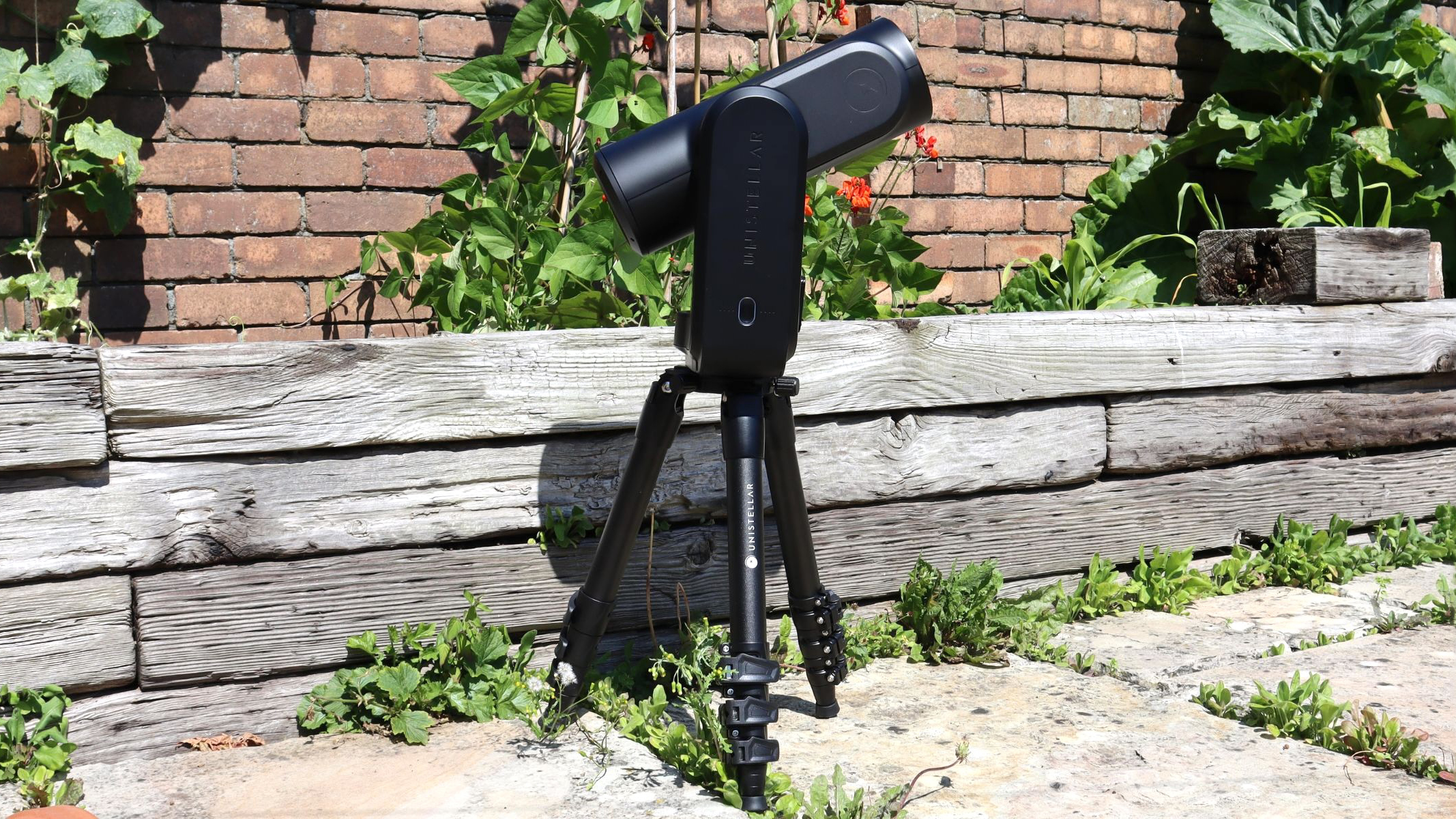
If you're after a serious, high-end smart telescope but don't want to pay the high prices for Unistellar's 'Expert' range—chiefly the eVscope 2 and the eVscope eQuinox 2—the Odyssey is an attractive option in the company’s drop-down 'Discovery' range.
An entry-level smart telescope, Odyssey is essentially an all-in-one astrophotography rig. It captures light from the night sky and lets it fall only onto a camera sensor, taking long exposures of faint objects. It automatically stacks them as it observes, applying post-processing algorithms to build a clean and colorful image that appears in a smartphone app.
This is deep-sky astrophotography made easy. However, its feature set ranks it a notch below the company's Odyssey Pro. Compared to its pricier sister, the Odyssey lacks a Nikon-made electronic eyepiece, so it can't be used in any way as a traditional telescope. That makes it the same as much more affordable smart telescopes like the ZWO Seestar S50 and Vaonis Vespera II. However, here you get bigger, better optics, and superior build quality. It's also a Newtonian reflector-type of telescope (rival brands of smart telescopes are all lens-based refractors).
With a lower price, can the Odyssey compete for the title of the best smart telescope in 2024? Here’s everything you need to know about the Odyssey Pro.
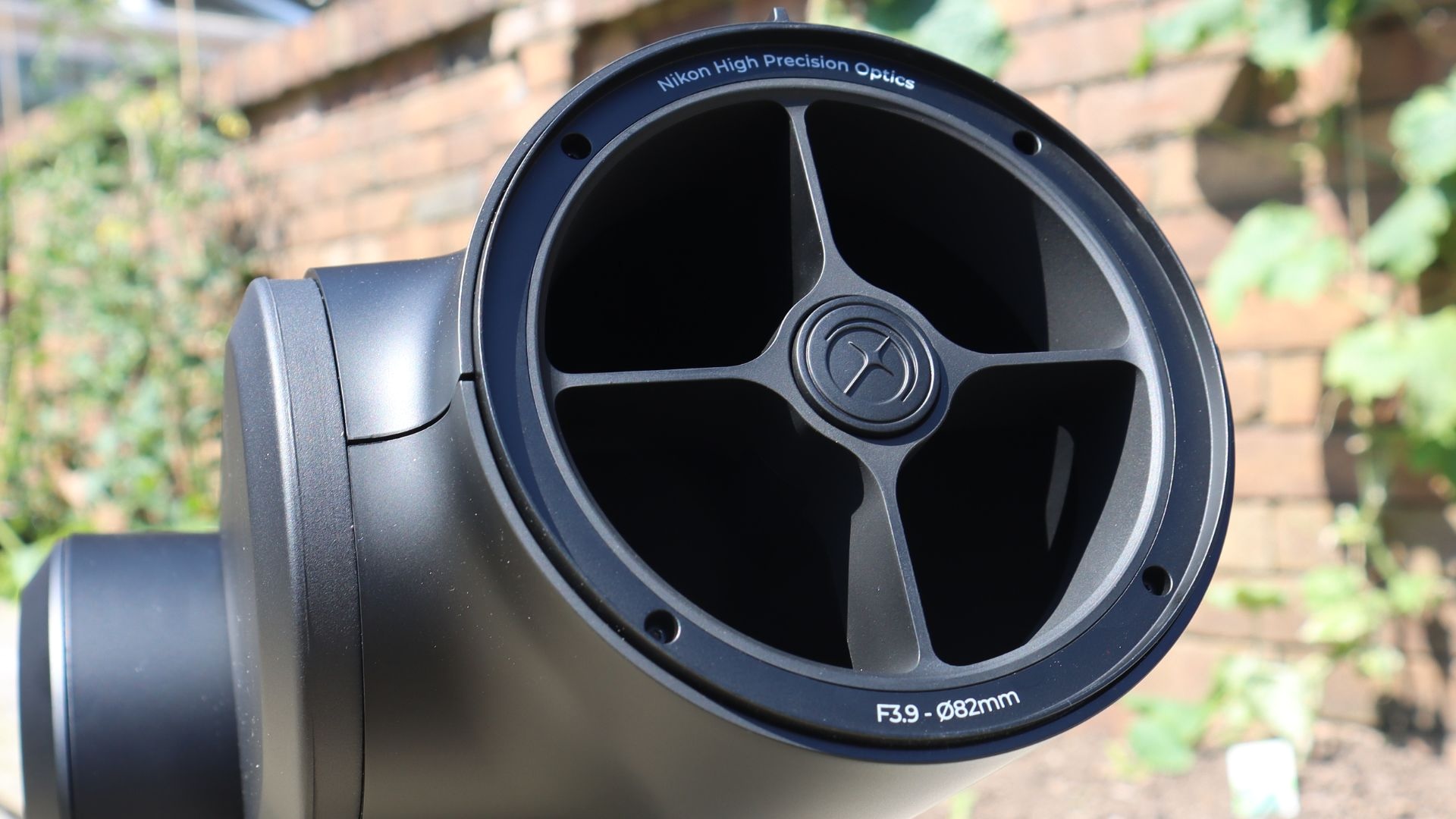
Unistellar Odyssey: Specifications
Unistellar Odyssey: Price
The Odyssey sells for $2,099 / £1,849, with frequent discounts available. That compares to the Odyssey Pro, which sells for $3,599 / £3,149. Both smart telescopes are in Unistellar’s 'Discovery' range.
The Odyssey and Odyssey Pro are essentially smaller and more affordable versions of the eVscope eQuinox II and eVscope II smart telescopes in Unistellar's 'Expert' range, which sell for $2,499 / £2,199 and $4,899 / £3,999, respectively.
For those after a Unistellar smart telescope for the lowest price possible, the choice is mostly between the Odyssey and the eVscope eQuinox 2. Neither has an electronic eyepiece, but where they differ is in their mirrors and megapixels. While the Odyssey has an 85mm mirror and 3.4 megapixels, the eVscope eQuinox 2 boasts a 114mm mirror and 6.2 megapixels.
Optional accessories for the Odyssey comprise a custom-fit backpack for $299 / £269 and a smart solar filter for $199 / £179. The latter is essential for capturing sunspots.
Unistellar Odyssey: Design & Handling
It’s not the smallest smart telescope around, but on the Odyssey, that’s a good thing. At its core, it’s a 3.35-inch/85mm reflector telescope. Its Nikon-made optics have a focal length of 320mm and a field of view of 34 x 45 arcminutes. Thanks to its lack of an eyepiece, it’s a shade lighter than the Odyssey Pro, so even easier to maneuver and store. Perhaps that’s its best design trick; whereas Unistellar’s eVscope telescopes are big and bulky (and brilliant), the Odyssey is significantly smaller and easier to live with. One issue with reflector telescopes is the need for occasional repositioning of their mirrors (a maintenance task called collimating). Happily, that’s not the case for the Odyssey, a closed unit with mirrors that won’t ever need tinkering with.
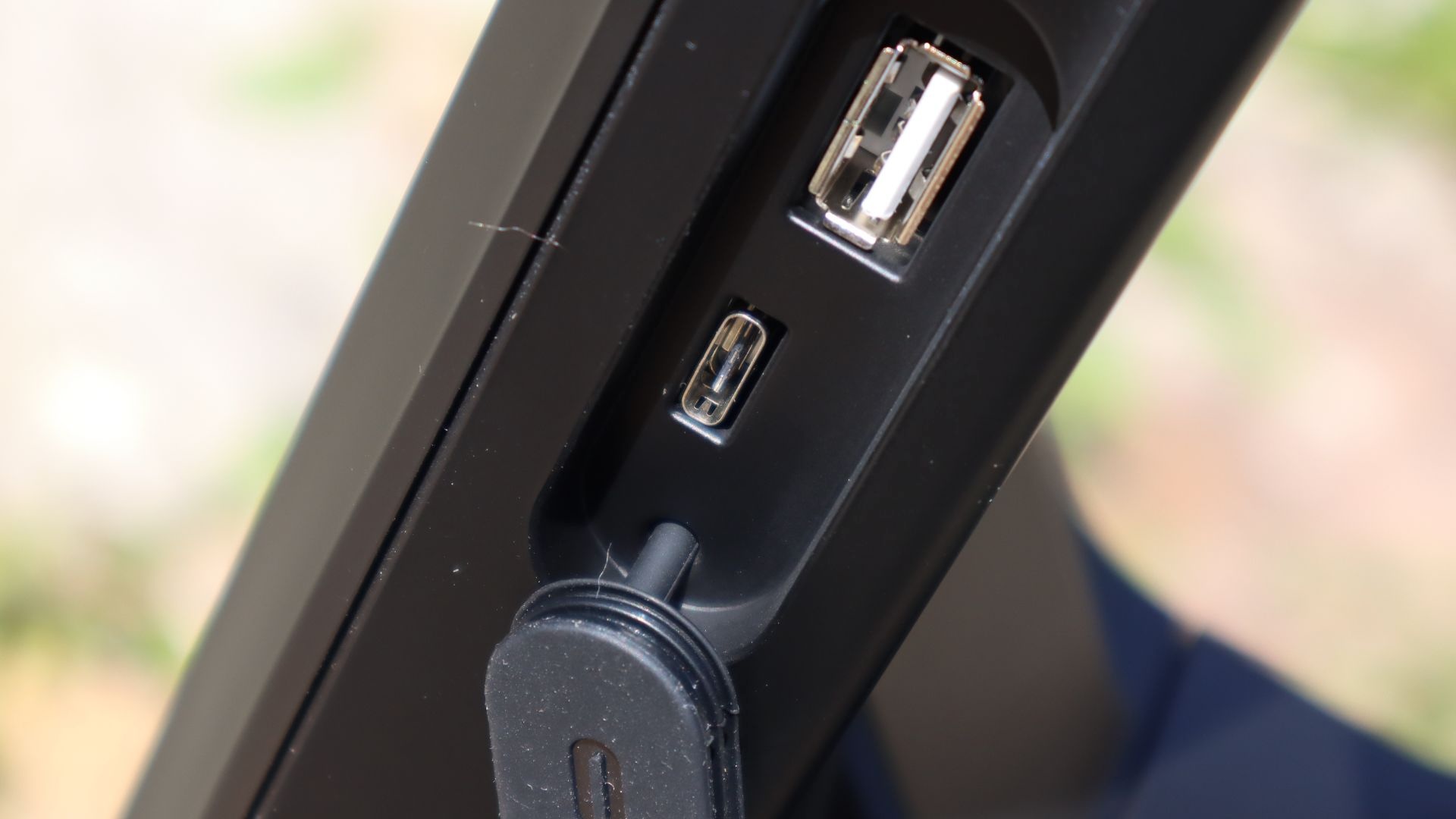
Odyssey’s small size does mean it has a short battery life. At five hours, it has the same problem as its rivals, the Vanois Vespera 2 and Seestar S50. It’s also a shame that although it recharges via a USB-C slot, it can’t be used with just any USB-C cable—it has to be the wall adaptor cable supplied in the box.
Its proprietary tripod is also initially irritating, considering how many tripods photographers tend to have lying around. At least it’s of excellent quality. Strong, sturdy, and able to extend to four sections, it’s super-steady and has a built-in bubble level. It also folds up nicely to fit in a camera bag.
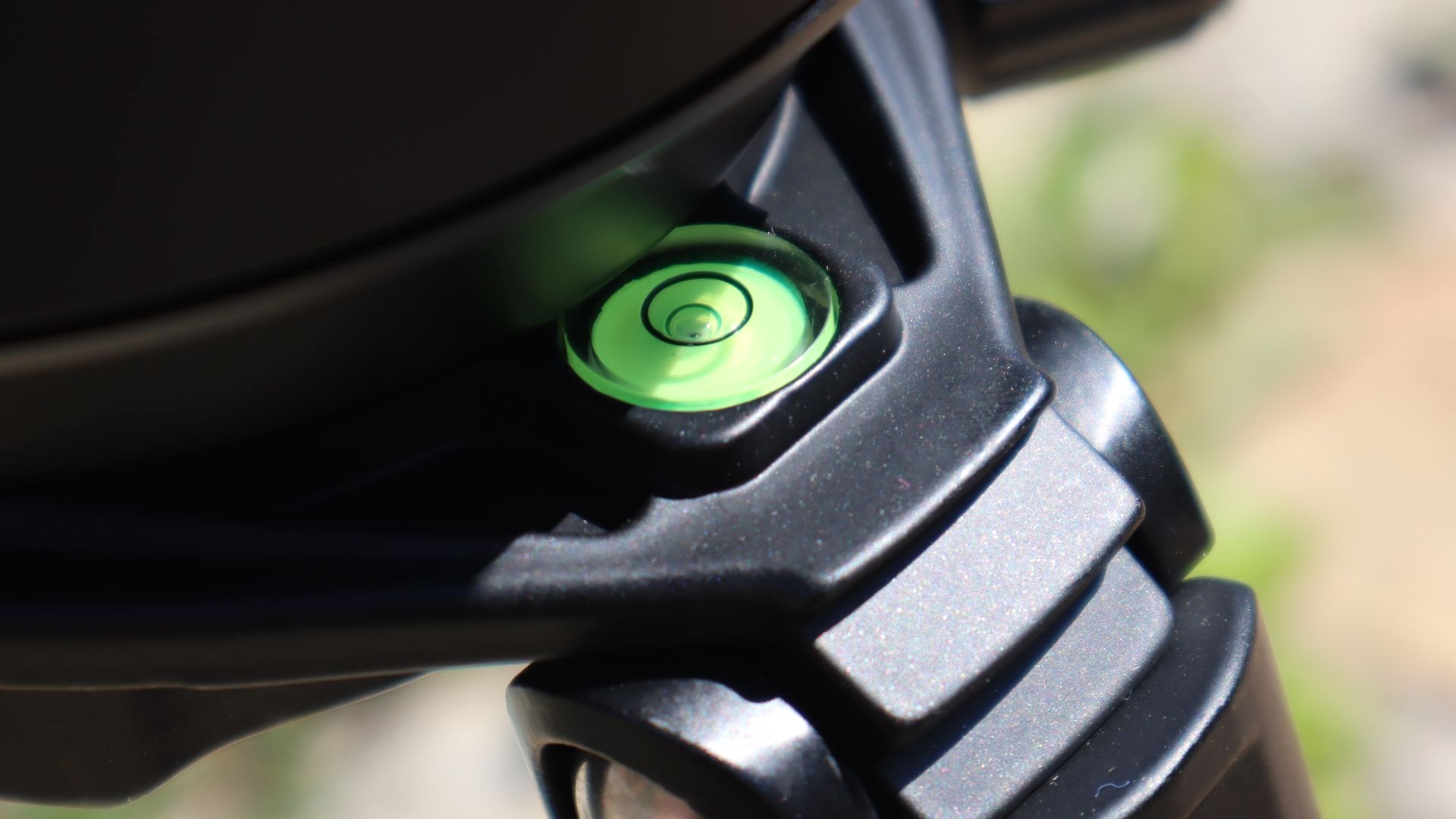
Setting up this telescope is so simple. Switch it on and pair it with a smartphone, and within minutes, its ‘smart star finder’ system has it imaging the sky, cross-referencing the stars it can see with images in its database (with a little help from the GPS in your phone). You then choose an object from a list, and the Odyssey will slew to it and autofocus upon it.
There’s a search function if you want to find something specific, though it would also be nice to have the option to move around a virtual representation of the night sky and geographically choose objects for Odyssey to slew to. After all, if you know the night sky, you’ll also know when an object is behind a tree, so having a sky map to navigate makes more sense than a list. It would also be an excellent way for beginners to learn how to navigate the night sky.
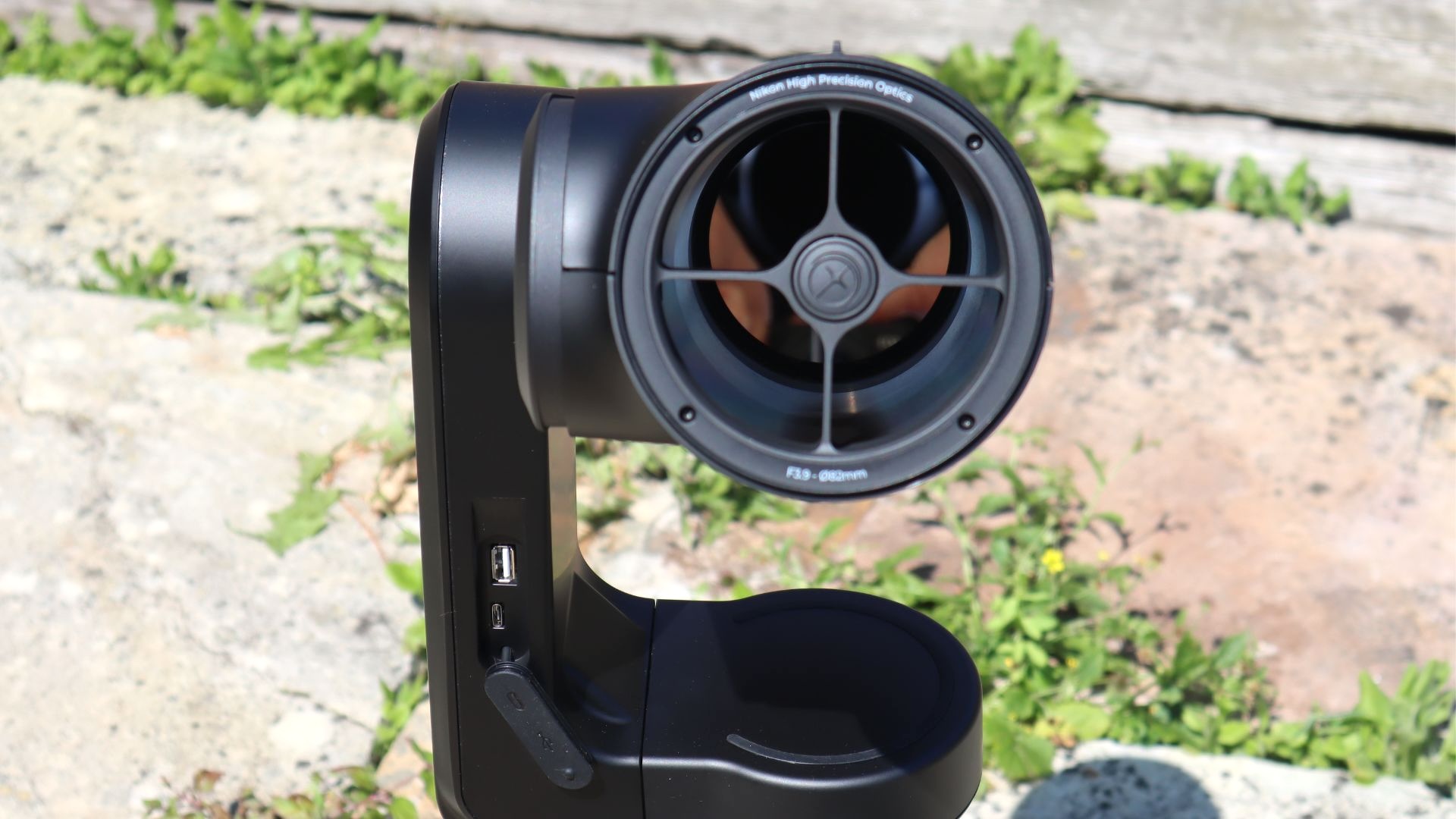
Once an object is slewed to, a press of the ‘Enhanced Vision’ button sets Odyssey on its imaging journey, taking multiple short exposures to stack atop one another, creating an ever-improving merged image in the app. At any time, it’s possible to save the entire 16:9 image to a smartphone or share a square image to social media, the latter complete with framing and a caption that includes basic image parameters. Toggle on an option in the app’s settings and lossless PNG, TIFF, and FITS files can be saved to Odyssey’s 64GB hard disk for post-processing.
Unistellar Odyssey: Performance
When it comes to pure imaging quality, the Odyssey is superior to its more affordable rivals, yet inferior to the pricer Odyssey Pro. That’s no surprise, but we did notice that some bright objects caused problems.
All the images we created were sharp, but some lacked ultimate detail. For example, it overexposed the Andromeda Galaxy—albeit while also skillfully revealing subtle dust lanes in its outskirts. Albireo, a famously contrasty double star in Cygnus, proved impossible to resolve as two stars in Odyssey’s image.
Other images, including those of globular clusters, open clusters, and galaxies, impressed. What all Unistellar’s images have in common is peerless contrast. Its ‘Deep dark technology’ clearly works, with lusciously black backgrounds to star fields and celestial objects that rival brands cannot match.
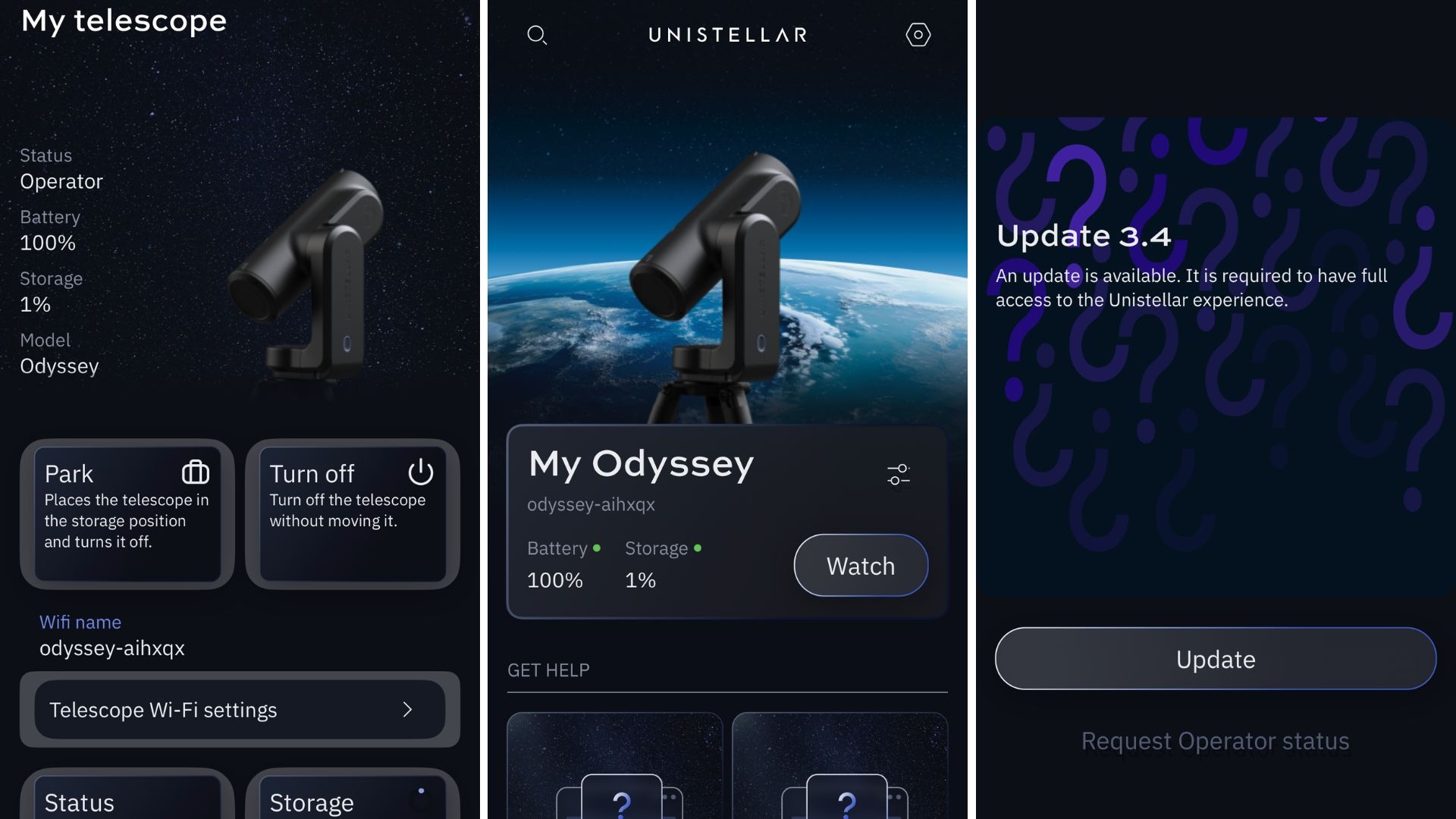
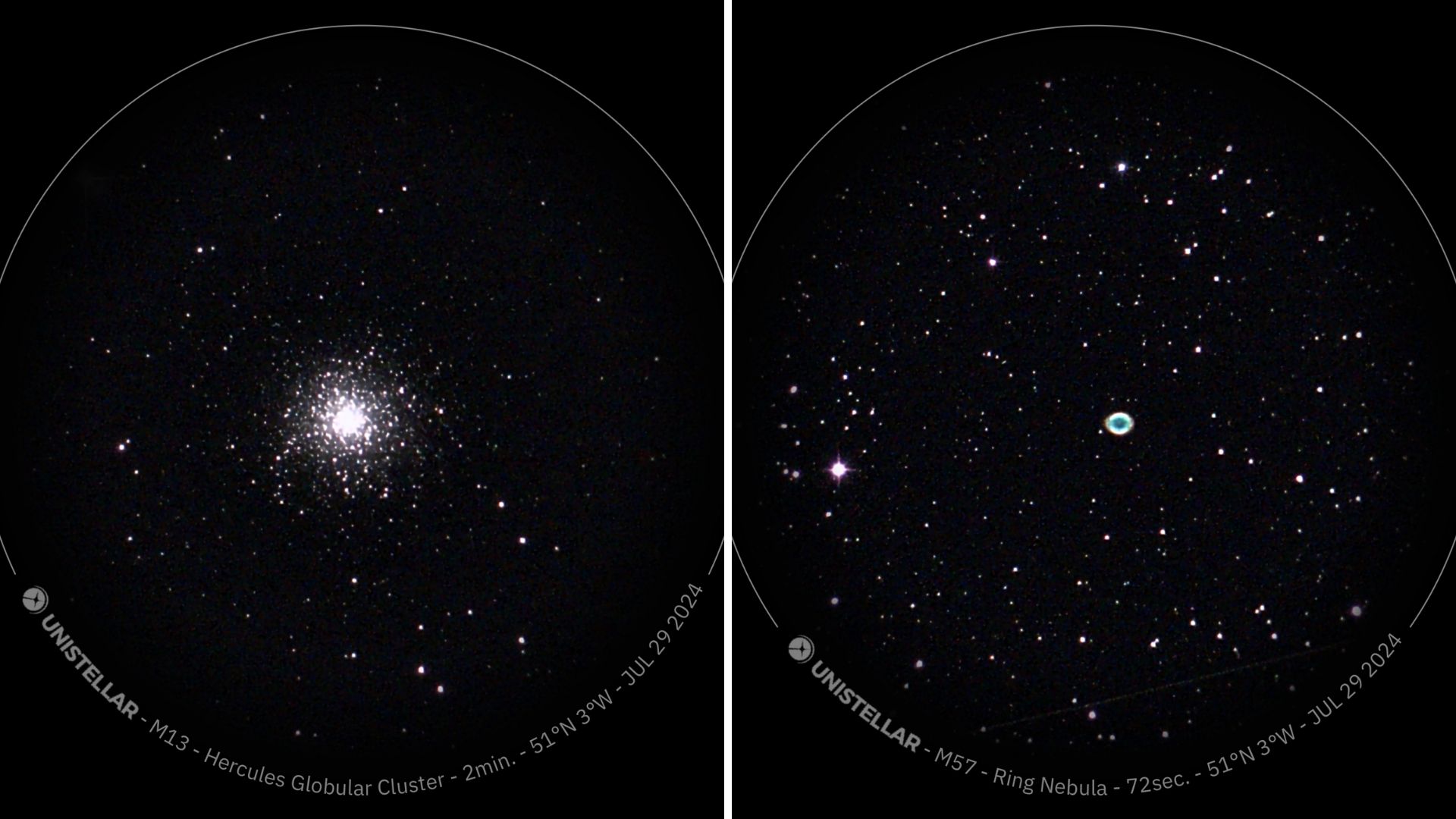
Also unlike other smart telescopes, Unistellar’s range has multi-depth tech, allowing them to image planets and the moon and deep-sky objects. Essentially, that means swapping from its usual long exposures to high-frame-rate imaging.
We tried it on Saturn, the only planet visible after sunset during the review. Saturn’s rings are seen only side-on for the next few years, so the view isn’t as good as it could be, but we were able to make them out in a reasonably fuzzy image.
For the moon, Odyssey excels, producing sharp, contrasty images of our nearest celestial neighbor.
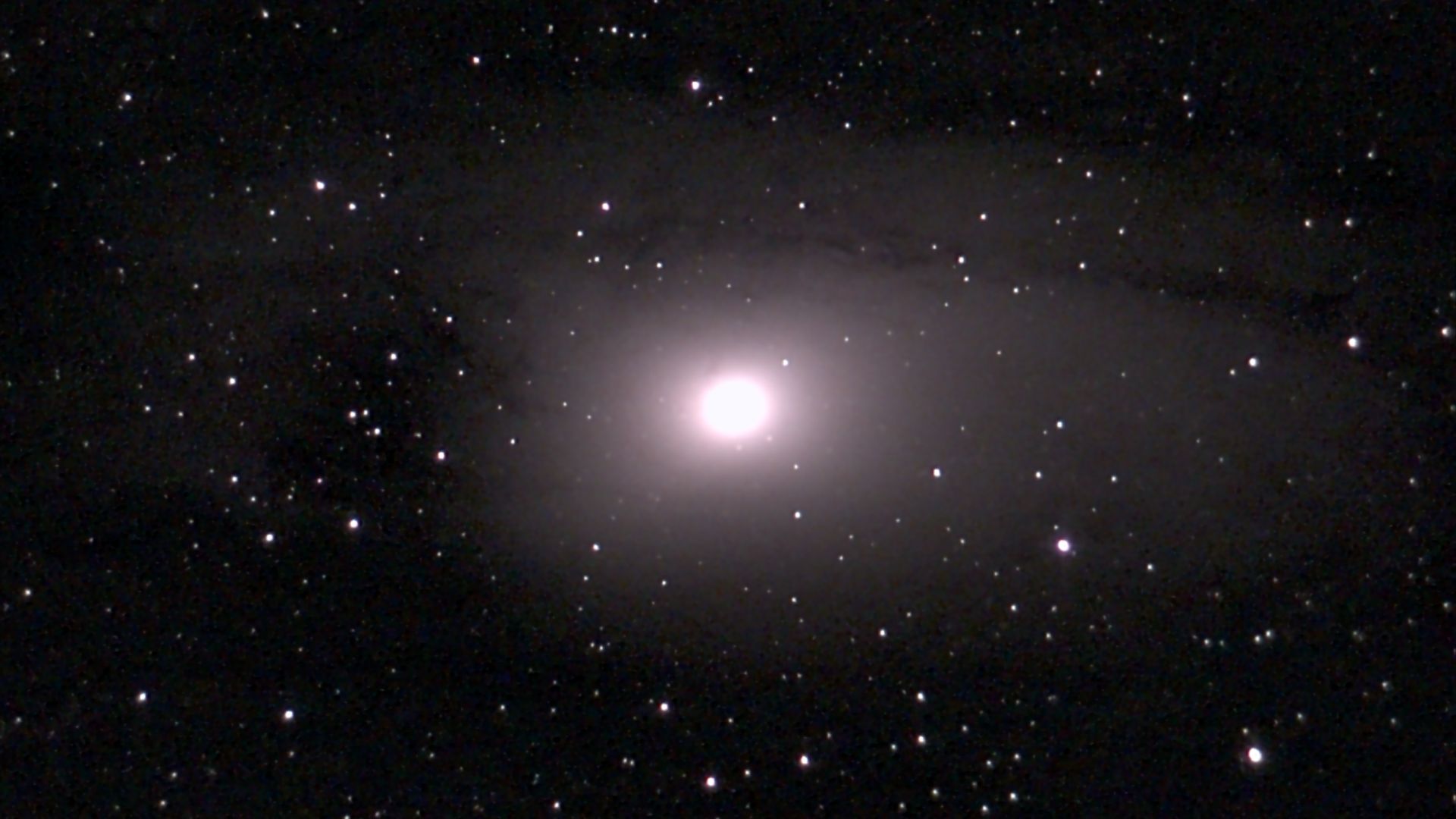
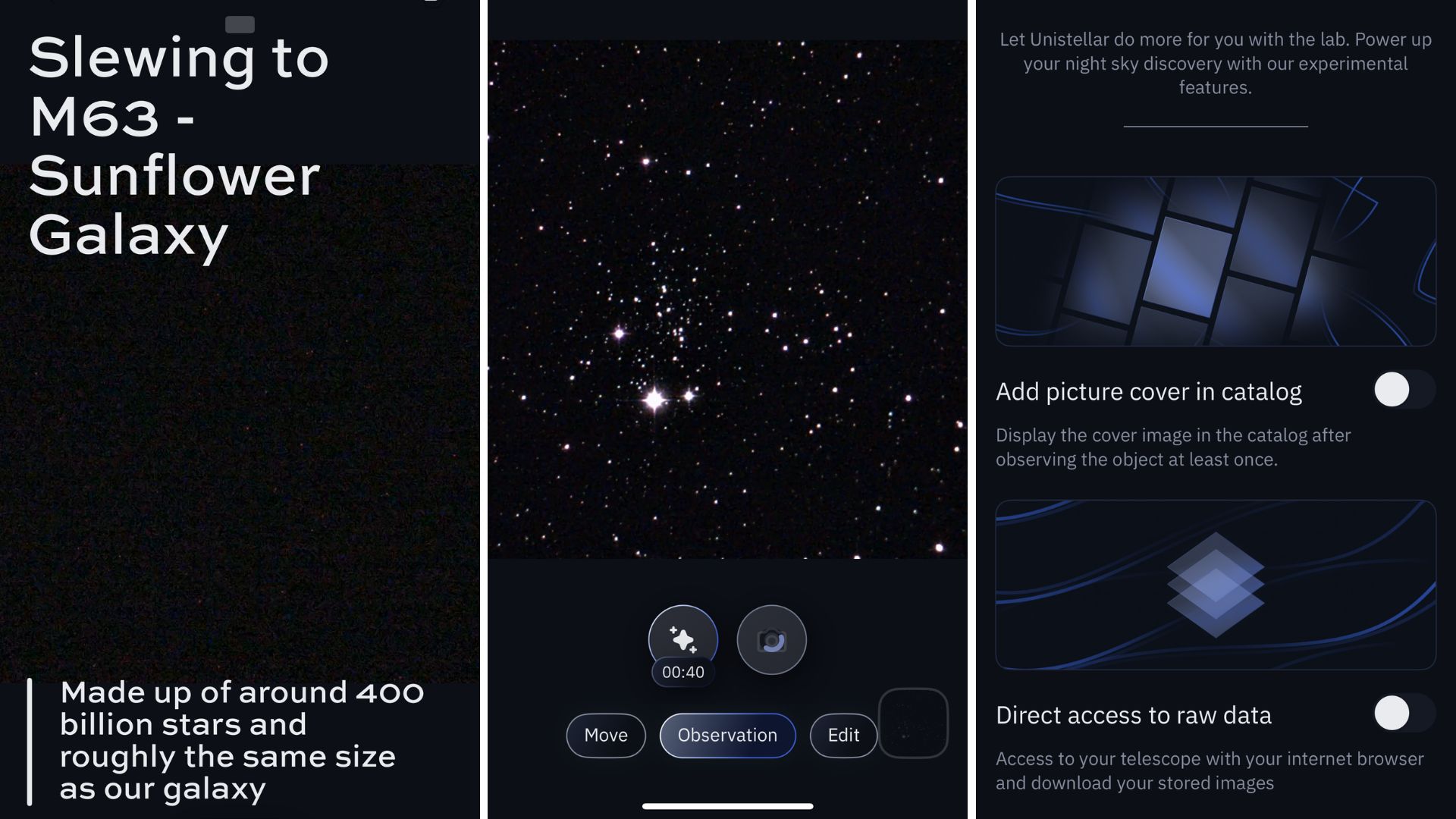
Unistellar Odyssey: Verdict
The most affordable Unistellar smart telescope is a joy to use. Setup takes minutes and imaging celestial objects of all kinds is easy. There’s a noticeable drop in imaging quality compared to the Odyssey Pro, and there’s no eyepiece for traditional astronomy, but this easy-to-store smart telescope is a great way to beat light pollution and try your hand at deep-sky astrophotography for a fraction of the fuss.
✅ Buy it...
- Its skill with light pollution makes it perfect for a balcony or backyard.
- Its images boast deep black backgrounds that its rivals can’t touch.
🚫 Don't buy it...
- It overexposes some objects and offers only basic images of planets.
- It’s expensive compared to some of its optically smaller rivals.







